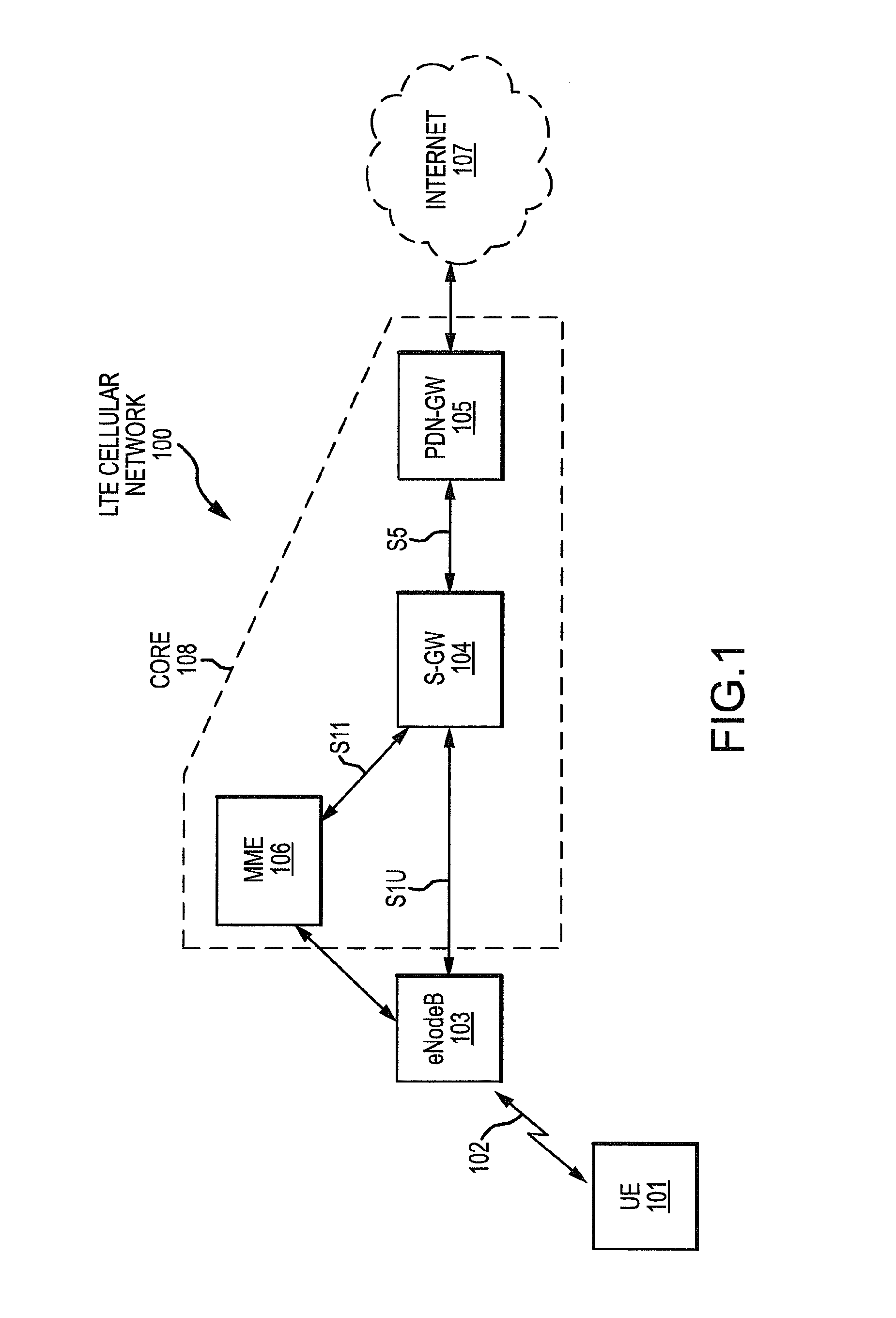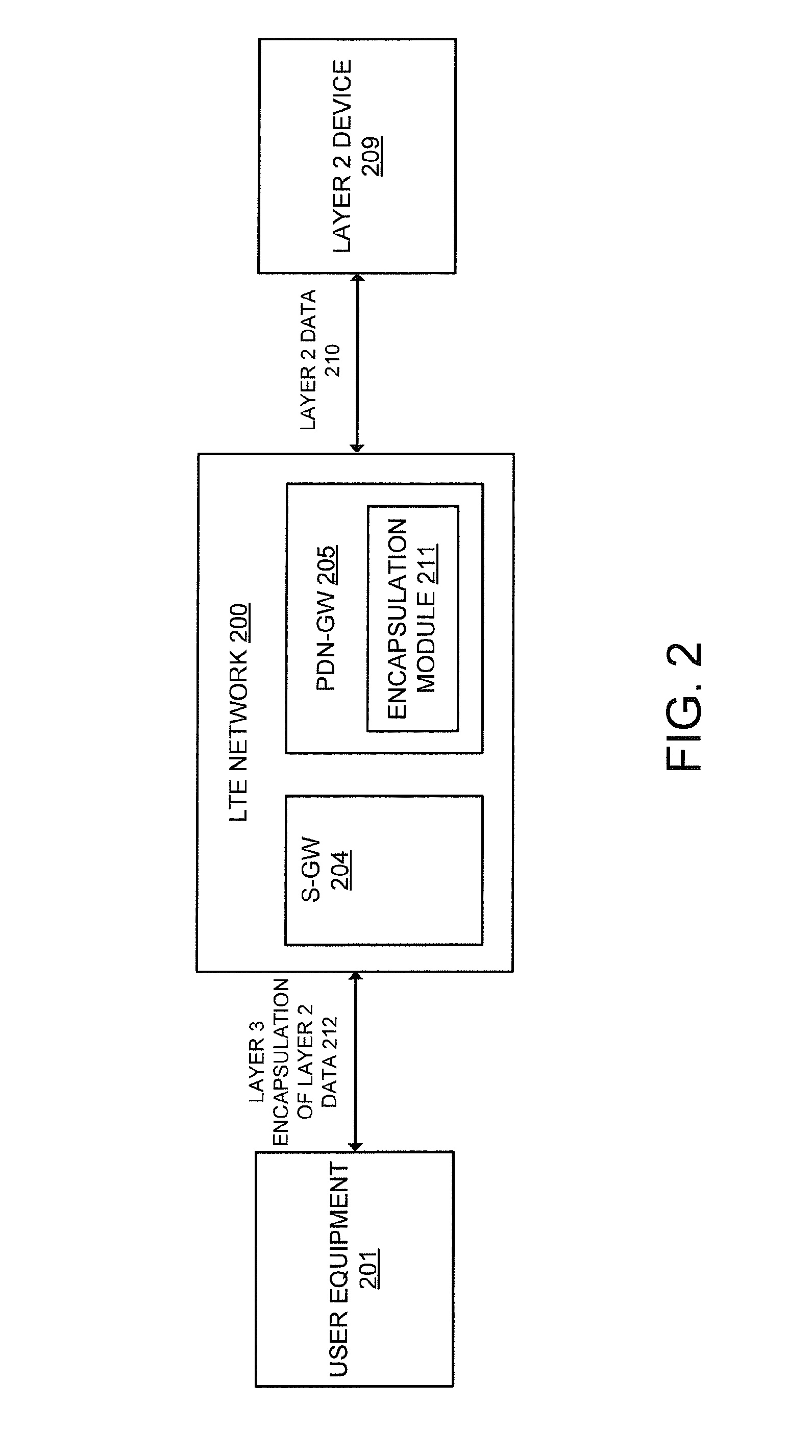Method and network element to limit service disruption due to a failure on a layer 2 interface
a layer 2 interface and failure technology, applied in the field of network communication, can solve the problems of conventional icr system may not provide sufficient protection against service outages and/or loss of network traffic, so as to limit the disruption of session handling, and limit the effect of session handling
- Summary
- Abstract
- Description
- Claims
- Application Information
AI Technical Summary
Benefits of technology
Problems solved by technology
Method used
Image
Examples
Embodiment Construction
[0023]As mentioned in the background section, when Layer 2 data is transmitted through the LTE network, the conventional ICR system may not provide sufficient protection against service outages and / or loss of network traffic. The current ICR system used in the PDN-GW and / or the network element performing the Layer 3 encapsulation of the Layer 2 data is not conventionally operable to monitor and detect failures on a Layer 2 interface. Following a failure on the Layer 2 interface, the network may detect the failure and begin to forward downlink traffic to the Layer 2 interface of the standby network element instead of to the active network element having the failed Layer 2 interface. However, uplink traffic may still be received on the Layer 3 interface of the active network element. This may lead to the uplink packets being dropped at the active network element as a result of the failure on the Layer 2 interface. Additionally, the standby network element may not be fully ready to ass...
PUM
 Login to View More
Login to View More Abstract
Description
Claims
Application Information
 Login to View More
Login to View More - R&D
- Intellectual Property
- Life Sciences
- Materials
- Tech Scout
- Unparalleled Data Quality
- Higher Quality Content
- 60% Fewer Hallucinations
Browse by: Latest US Patents, China's latest patents, Technical Efficacy Thesaurus, Application Domain, Technology Topic, Popular Technical Reports.
© 2025 PatSnap. All rights reserved.Legal|Privacy policy|Modern Slavery Act Transparency Statement|Sitemap|About US| Contact US: help@patsnap.com



